Streaming services are now an integral part of the TV-watching experience. Everyone now needs a smart device in order to watch their favorites shows from Netflix, Disney Plus or HBO Max on their TV. Fortunately, just about every new TV comes with a built-in smart TV system that give you direct access to some of your favorite streaming apps.
In our TV reviews we consider that smart TV system, sure, but picture quality for the money is more important. That's because you can always "replace" the TV's built-in system with a good streaming device, most of which cost less than $50. That's why we don't consider a particular smart TV OS one of the top factors to consider when buying a new TV: Picture quality, size, price and connection features are all more important.
Our list below is arranged in order of which TVs provide the best picture for the money, but we also note how much we like (or dislike) the built-in smart TV system. Here are our latest recommendations, and for TVs from last year (many of which are our top picks) we've included a "2022 outlook" section with information on the new model.
Roku is one of our favorite streaming platforms because it has the most streaming app options, the simplest streaming platform interface and the best search. It also features a content-agnostic platform that doesn't push any one media streaming service provider, like Amazon Prime Video or Apple, over another.
The TCL 6-Series Dolby Vision HDR TV pairs this operating system with an outstanding TV for a winning combination. It has an excellent image thanks to mini-LED tech and well-implemented full-array local dimming that helps it run circles around just about any other TV at this price. It's also a solid choice for gamers, with a THX mode that combines low input lag and high contrast. No TV we've ever tested offers this much picture quality for as little cash.
This TV first came out in 2020 but is still a current model and remains our top choice. TCL also sells an 8K version of the 6-Series, but we don't think it's worth the extra money, as well as a Google-powered version that we have yet to review (although according to TCL its image quality is the same as this Roku version).
Sizes: 55-, 65-, 75-, 85-inch. (The prices shown below are for the 75-inch size.)
2022 outlook: TCL has yet to announce a successor for this TV. We're betting it will do so later this spring.
With picture quality as good as any TV we've ever tested and a price that's not too crazy, the LG C1 OLED TV is still our go-to pick for people who prioritize picture and are willing to pay for it. It beats any non-OLED TV on this list, including the Samsung QN90A below, with its perfect black levels, unbeatable contrast and superb off-angle viewing. It also has the best gaming features, making it the perfect companion to an Xbox Series X or S, PlayStation 5 or both. The C1 comes in a wide variety of sizes as well, although the bigger models are really expensive.
One downside to the C1 is its WebOS smart TV platform. It was revamped in 2021 and it now features a full-screen homepage, similar to what you get with a Roku, Fire TV or Google TV. But it has fewer apps and more, well, junk. The top two-thirds of the screen are devoted to the weather, setup tips, a search window and a Trending Now section with a random collection of TV shows and movies. Below that is an app row and, farther down, sections devoted to inputs and particular streaming apps. In general it feels like a hodgepodge with too much going on -- most systems are simpler and easier to grasp. This might be an instance where fans of a particular smart TV platform might want to purchase a streaming device separately.
We also reviewed the successor to the C1, the LG C2, and the two have essentially identical picture quality. The newer version brings a couple of minor improvements, including lighter weight and a 42-inch size. Since the 2021 C1 currently remains on sale for hundreds less than the 2022 C2, we recommend getting the C1 instead.
Sizes: 48-, 55-, 65-, 77-, 83-inch. (The prices shown below are for the 65-inch size.)
The C2 is the first 2022 TV we've reviewed and it's superb, but right now the 2021 model is a better deal. We side-by-side compared the C2 directly to last year's C1. In terms of picture quality, the two were basically identical, despite the fact that LG touts the new "Evo" panel on the C2. Real improvements include carbon-fiber construction for up to 47% lighter weight -- the 65-inch version we reviewed weighs 37 pounds with its stand, compared to 72 pounds for the 65-inch C1 -- as well as some additional tweaks to game mode and a new "always on" feature. Those enhancements aren't worth the price difference, so our advice is to buy a C1 now or wait until later this year, when the C1 sells out and the C2 gets a price cut.
Like the C1, the C2 is also bogged down by the WebOS smart TV system. Signing in to an LG account unlocks a new 2022 feature, customized recommendations and additional user accounts. LG touts the fact that you can set up favorite sports teams, for example, but most people will just go straight to the app and skip the clutter. On a TV this expensive you should just attach a good streaming device instead.
The C2 is also available in a 42-inch size (coming in May), while the smallest C1 is a 48-inch model.
Sizes: 42-, 48-, 55-, 65-, 77-, 83-inch. (The prices shown below are for the 65-inch size.)
Looking for a high-end TV with spectacular image quality, but don't want an OLED? The Samsung QN90A is your best bet. This TV uses QLED TV tech augmented by mini-LED for a brighter image than any OLED TV. The spectacular contrast of OLED still won out in our side-by-side tests, but the QN90A QLED screen comes closer than ever.
Samsung's onscreen smart TV system is excellent, with quick responses and plenty of apps -- we'd take it over LG or Vizio's systems. We still like Roku and Android/Google TV (found on Sony TVs) better overall, however, because they have even more apps. Just like most TVs now (including Roku), Samsung has the Apple TV app and works with Apple's AirPlay system.
Sizes: 50-, 55-, 65-, 75-, 85-inch. (The prices shown below are for the 65-inch size.)
2022 outlook: The 2022 version of the Samsung QN90A is called the QN90B. We haven't reviewed it yet, but we expect it to have very similar image quality despite the fact that the 2022 version has a lower "Quantum HDR" spec (24x) then the 2021 version (32x). Samsung touts improved processing and a few extra features but nothing earth-shattering, and the 2022 QN90B currently costs hundreds of dollars more than the 2021 QN90A.
Roku is our favorite platform for live TV streaming services like Netflix, Hulu and Amazon Prime Video, and it's even better baked into the TV. This TCL 4-Series can't beat any of the models above on image quality -- its 4K resolution and HDR performance don't do much to help the picture -- but it's perfectly fine for most people, especially at this price.
Note that TCL also makes a Google TV and an Android TV version of the 4-Series. We haven't reviewed them, but we expect similar picture quality to the Roku version.
Sizes: 43-, 50-, 55-, 65-, 75-, 85-inch. (The prices shown below are for the 43-inch size.)
2022 outlook: TCL has yet to announce a successor for this TV, but we're betting it will later this spring.
The Vizio MQ7 is one of the least expensive TVs to feature full-array local dimming, which lets it reproduce TV shows, movies and games with enough contrast and pop to do HDR justice. It's a 60Hz model, not 120Hz, but it still handles variable refresh rate games for extra smoothness. If you can't save up for the TCL 6-series, the Vizio MQ7 makes an excellent consolation prize.
The company has made more changes to its SmartCast system but it falls short of Roku, Android TV, LG or even Samsung's proprietary systems. The main homepage is packed with TV show, movie and channel suggestions you probably don't care about, and the stuff you'll probably use most (the streaming apps themselves) is limited to a single row.
Sizes: 50-, 55-, 58- 65-, 70-, 75-inch. (The prices shown below are for the 55-inch size.)
2022 outlook: Vizio has yet to announce a successor for this TV.
Vizio's V-series is our favorite budget alternative to the TCL 4-Series Roku TV. We liked Roku's smart TV system better (sound familiar?), but the V-series has some advantages, including a better remote with voice and more advanced picture settings. Picture quality between the two was basically the same, so if you don't have a preference, it makes sense to get the cheapest one.
Sizes: 43-, 50-, 55-, 58- 65-, 75-inch. (The prices shown below are for the 55-inch size.)
2022 outlook: Vizio has yet to announce a successor for this TV but we expect it to do so later this spring.
With excellent picture quality, anchored by full-array local dimming and plenty of brightness to make HDR content shine, the X90J is Sony's answer to the TCL 6-Series and step-up Vizio models. This TV's sleek looks and built-in NextGen TV tuner score points, as does its next-gen console support -- including variable refresh rate (VRR), enabled by a software update in March 2022. If you want an "S" brand, this is one of the best values we've tested.
The Google TV smart TV system is our second-favorite after Roku, and good enough that you probably don't need to get an additional streaming device. It features excellent voice support with Google Assistant, a powerful onscreen menu and more apps than any system except Roku.
Sizes: 50-inch, 55-inch, 65-inch, 75-inch. (The prices shown below are for the 55-inch size.)
2022 outlook: The successor to the X90J is the X90K. We haven't reviewed the new model yet but its image quality specifications are largely similar to the 2021 version, so we don't expect many picture quality differences. Unlike the 2021 version, the new model ships with VRR enabled out of the box.
Samsung is the TV brand that sells more TVs than anyone and one of the most popular is the Q60A series. Its sleek OLED screen design stands out compared with the other TVs on this list -- although the ultrathin OLED models are even sleeker -- it offers better features and image quality than budget models like the TCL 4-Series, and it comes in a vast array of sizes. The TVs above are all superior values, but if you want a Samsung TV and can't afford the QN90A, this is a great choice.
As far as apps go, you get all the standard options like Netflix, Vudu, HBO Max and so on. The Q60A's interface isn't nearly as in-your-face about streaming as, say, the Vizio (and the Roku-enabled TCL, to a lesser extent). The apps are grouped in a small row at the bottom of the screen, like the smart TVs of yore. There's also Samsung TV Plus, which is essentially like free basic cable but you can't fast-forward through ads.
Sizes: 43-, 50-, 55-, 60-, 65-, 70- 75-, 85-inch. (The prices shown below are for the 55-inch size.)
2022 outlook: The successor to the Samsung Q60A is the Q60B. We haven't reviewed it yet but according to Samsung's web site its specifications are basically the same as the 2021 version, so we expect similar picture quality. The Q60A is slightly cheaper than the Q60B, so it's our pick.
How does CNET test smart TVs?
Our TV reviews follow a rigorous, unbiased evaluation process honed over nearly two decades of TV reviews. Our primary TV test lab has specialized equipment for measuring light and color, including a Konica Minolta CS-2000 spectroradiometer, a Murideo Sig-G 4K HDR signal generator and an AVPro Connect 8x8 4K HDR distribution matrix. We use Portrait Displays CalMan Ultimate software to evaluate every TV we review. In every CNET TV review, three or more similar TVs are compared side by side in various lighting conditions playing different media, including movies, TV shows and games, across a variety of test categories, from color to video processing to gaming to HDR. Our reviews also account for design, features, HDMI input and gaming compatibility and other factors.
When specifically evaluating smart TV performance, we use all of the major features available on the platform and note how they stack up against the competition. Our metrics include: overall platform ease-of-use, effective layouts and design, search capabilities, privacy settings, the number of apps and their performance, and the overall speed and reliability of the system.
TV FAQs
We'll post the answers to commonly asked TV questions below. If you have any others, feel free to reach out on Twitter (@dkatzmaier), or by clicking the little envelope icon on my CNET profile page.
What is the best smart TV system for streaming?
At CNET our favorite is Roku for its simplicity, while Google TV is our runner up for its impressive integration with other Google services such as Google Photos and YouTube TV. Samsung TV's system is our third choice, with Amazon Fire TV and LG left as some of our least favorite options.
In any case we don't consider the built-in smart TV system that important because you can always connect a streaming device to any TV.
What about Amazon Fire smart TVs?
Amazon makes a full range of smart TVs that run on their Fire operating system. The Fire TV platform is not one of our favorites because of the fact that ads are featured prominently throughout. We just don't appreciate the TV becoming a giant rotating billboard for content or ads when in screensaver mode. In addition, we've found other TVs tend to have better picture quality than most Fire TVs.
The Toshiba M-Series Fire TVs seem like they could buck this trend. We've yet to review one, but will update this list when we do.
Do smart TVs come with Alexa and Google?
Many smart TVs come with some kind of voice assistant. All Amazon Fire TVs come with Alexa built in, while Sony, TCL and Hisense TVs that run on Google's operating system offer Google Assistant. Many new Samsung and LG TVs come with both Google Assistant and Amazon Alexa built-in as well. Roku TVs and Vizio TVs, meanwhile, respond to voice commands but don't work with Alexa or Google Assistant.
On most of these TVs you'll need to speak into the remote to use voice commands, but some also respond to hands-free "Alexa" or "Hey Google" wake words, just like a smart speaker. And many TVs can also be paired with a smart speaker, such as an Echo Dot or Google Nest Mini, to receive voice commands.
How big a TV should I get?
In our opinion bigger is better, and your money is best spent on large screen sizes rather than a slight upgrade in image quality. The answer also depends on room size and seating distance: If you have a big room and sit farther away, you'll want a bigger TV. The answer also depends on room size and seating distance.
How do I get the best TV sound?
Most TVs sound terrible because their thin cabinets don't have room for decent-size speakers or bass. If you want to get good sound you should buy an external audio system. Even an inexpensive soundbar will deliver much better audio quality than a TV's built-in speakers. The Roku Streambar is a good example of a device that integrates a streaming system with a soundbar into one product.
More home entertainment recommendations
"TV" - Google News
April 30, 2022 at 04:15AM
https://ift.tt/C1QLHpM
Best Smart TV for 2022 - CNET
"TV" - Google News
https://ift.tt/qj2maPN
Bagikan Berita Ini
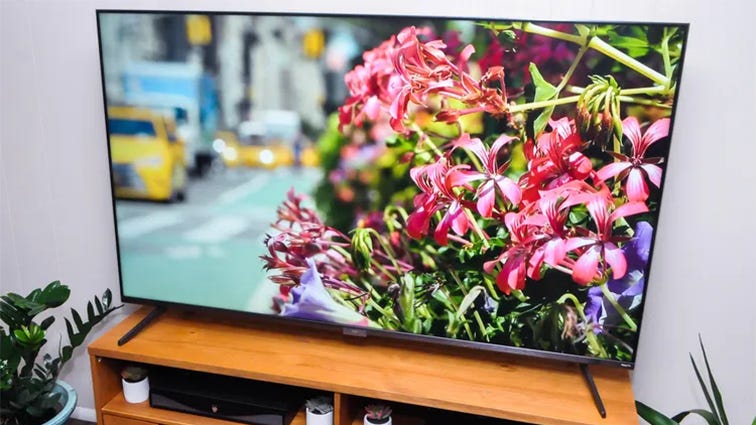
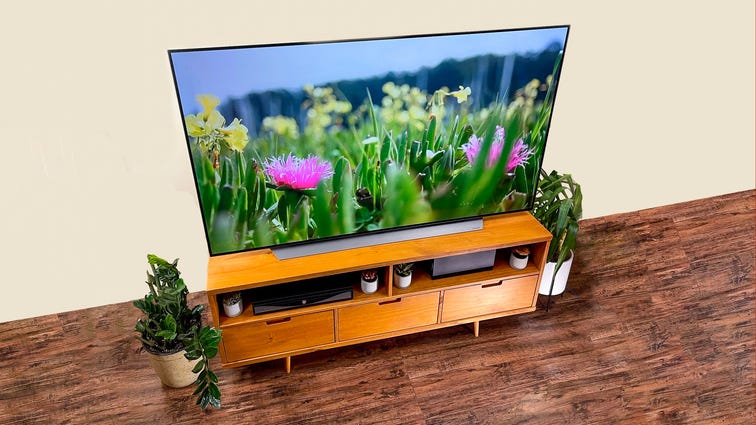
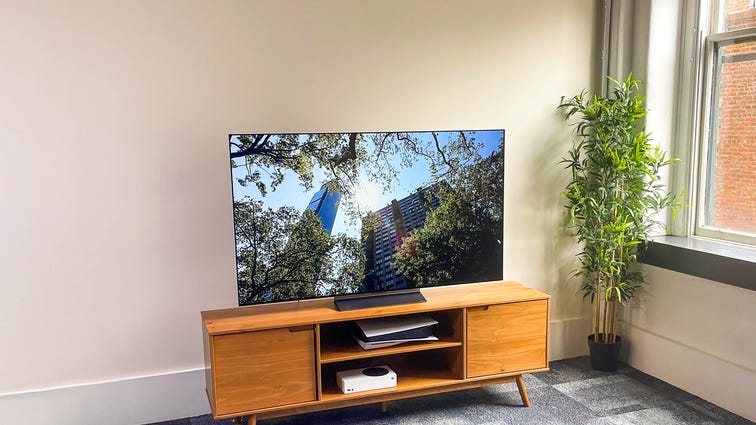

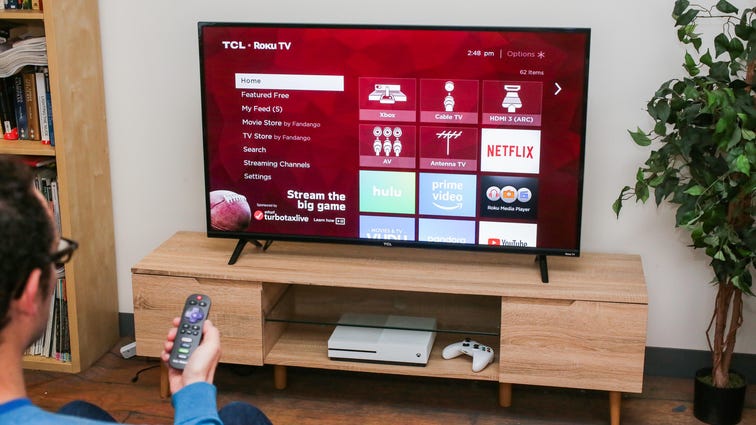

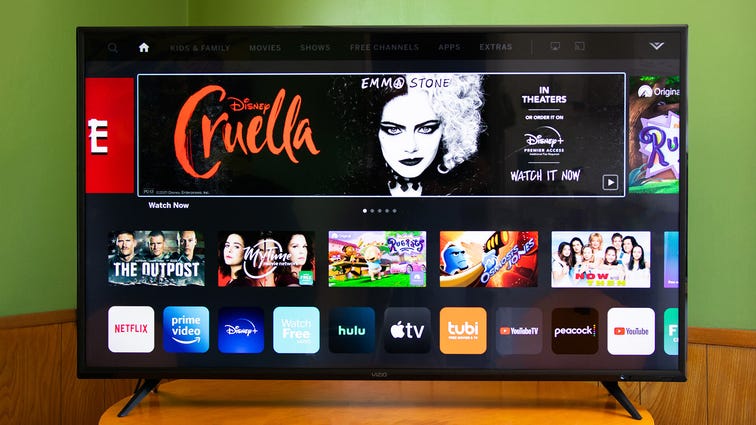
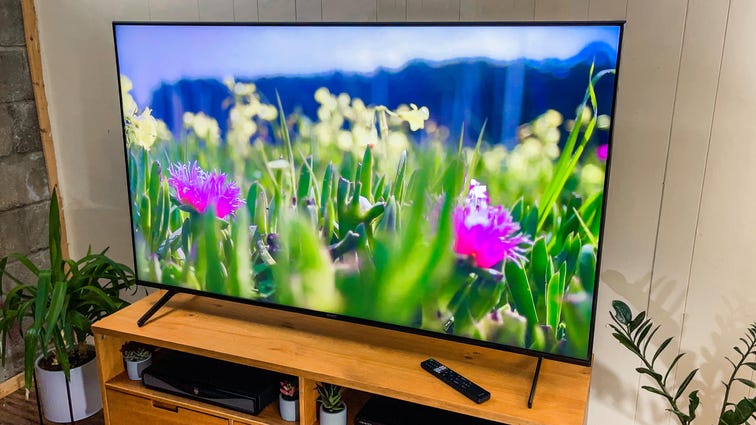
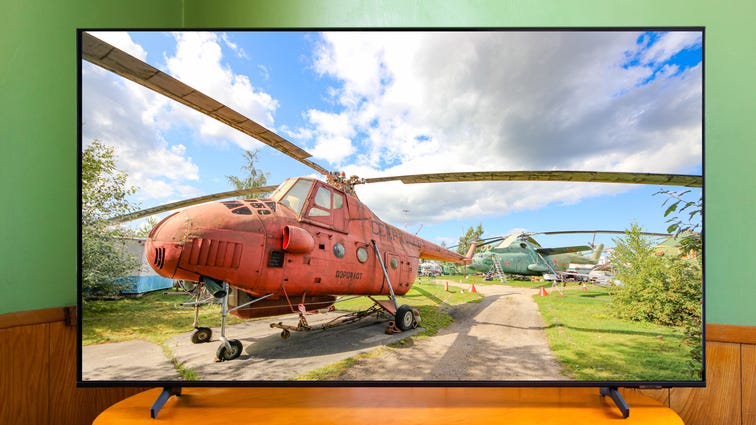














0 Response to "Best Smart TV for 2022 - CNET"
Post a Comment